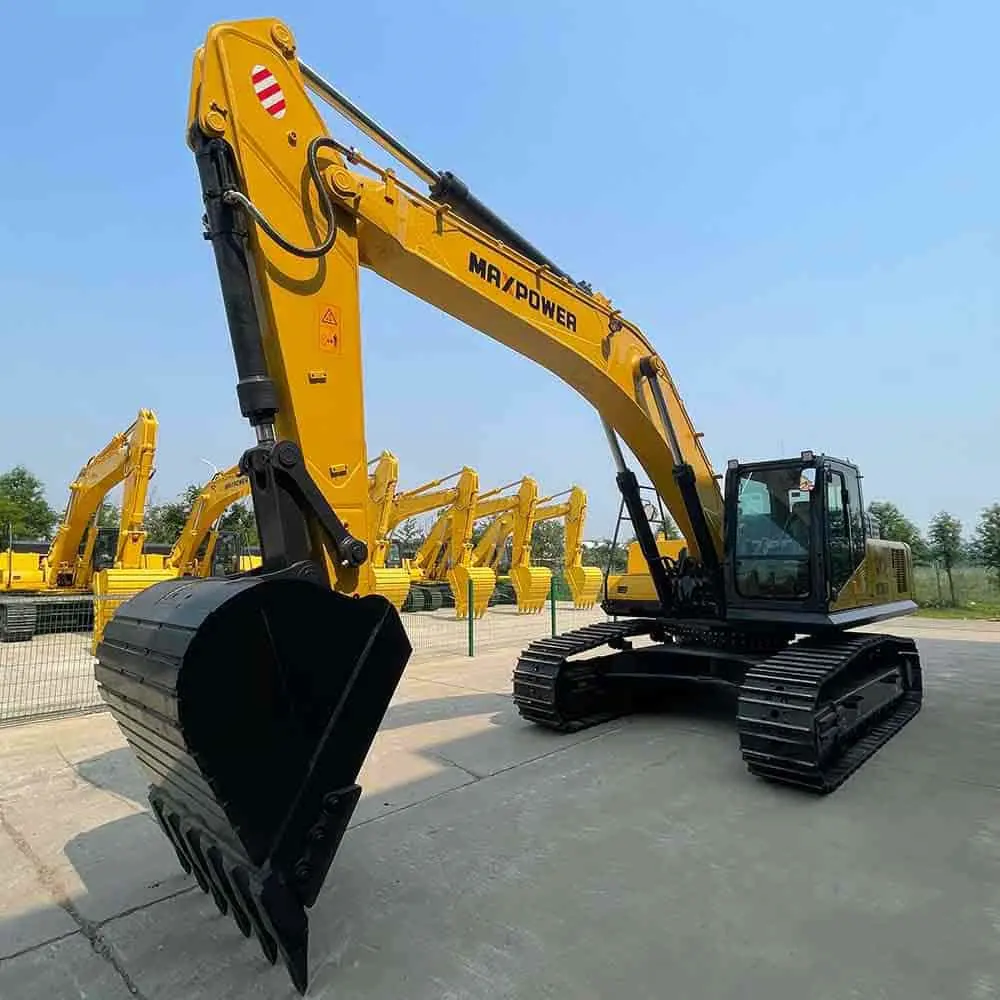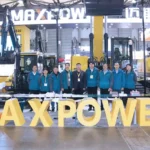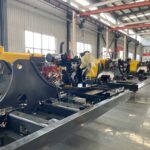Introduction
Purchasing a new large excavator represents a major business investment. These heavy construction machines have high price tags reaching several hundred thousand dollars. Selecting the right large excavator model tailored for your workscope brings huge owner productivity and profitability benefits over time. In this comprehensive guide, we reveal insider tips and techniques for choosing the optimal large excavator based on application requirements and site conditions.
Define Workscope Expectations

The first step when choosing any capital equipment is confirming the scopes of work and output expectations. Analyze what types of projects and materials the large excavator handles at your sites. This determines specifications like:
- Bucket sizing/type
- Lift capacity needs
- Swing torque requirements
- Attachment tools compatibility
Properly defining workscope fitness also examines terrain challenges and conditions where the machine operates. Validate features like appropriate track styles, site mobility, and guarding levels suit frequent environment exposures. Confirm any custom attachments integrate safely with quick coupler options as well. Consider all scope contexts before screening candidate large excavator models.
Compare Machine Specifications

With application parameters defined, compare technical specifications of different large excavator models side-by-side. Evaluation matrices help identify optimal configurations that align with usage needs:
| Excavator Models | Max Dig Depth(mm) | Bucket Capacity(m3) | Operating Weight(T) | Tail Swing |
|---|---|---|---|---|
| ME520 Excavator | 6260 | 2.8 | 47.5/49.5 | Minimum |
| ME390.9 Excavator | 6890 | 1.6-1.9 | 37.5 | Super minimum |
| ME385 Excavator | 6875 | 1.6-1.8 | 37.5 | Standard |
Check listed lift capacities at various reaches and hydraulic power outputs. Confirm track options suit frequent ground conditions. And ensure operator cab comfort and accessory features fit preferences. Matching application requirements against technical specifications screens for excavators with optimal configurations.
Evaluate Acquisition Investment
With candidate models identified, estimate and evaluate total cost of ownership values. The ultimate expenditure extends far beyond just machine sticker pricing. Analyze significant factors like:
- Base model trims and attachments
- Estimated component lifespan
- Fuel/maintenance consumption
- Trade-in value retention
Also project availability of local dealer support regarding parts, service technicians, and equipment transporters. These ancillary considerations influence excavator investment returns as much as sheer digging performance does. Model valuations accounting for total lifetime costs reveal the best configurations justifying price premiums. There are always surprises owning heavy machinery – budgeting conservatively positions smart investors best.
Validate Site Logistics
Before finalizing purchasing decisions around any shortlisted large excavator models, validate site logistic requirements. Inspect current or expected project locations considering:
- Site access roadway width/height
- Maximum trailer size limitations
- Overhead obstruction clearances
- Support equipment needs
Nothing derails new equipment transition plans faster than showing up with wrongly sized machines. Visual inspections at install sites either validate transportation plans or expose hidden access flaws. Thorough location logistics checks either confirm large excavator selections or prompt critical specification adjustments like swing radius reductions. Never assume a machine simply maneuvers or lifts onboard everywhere without validation.
large excavator:Conclusion & Next Steps
In closing, selecting the ideal next large excavator that maximizes efficiency over many years requires methodical comparisons. Following these best practice steps sets owners up for success:
- Define application workscope expectations
- Compare specifications suited for scenarios
- Project and evaluate total cost investments
- Validate delivery transport logistics
Moving forward too quickly risks expensive conversions or replacements down the road. But taking time to follow this buyer methodology results in optimal long term equipment decisions. Reach out now to discuss customizing the perfect large excavator matching your unique operational requirements!
FAQ
What fuel options exist besides diesel for powering large excavators?
Some brands offer liquefied natural gas (LNG) and electric drive alternatives. These options limit operational range but produce less air pollution. Evaluate infrastructure availability supporting alternate fueling requirements before deciding.
What technology features improve large excavator operability?
Popular options include remote machine data monitoring, rearview camera displays, proximity radar systems, laser grading attachments, and wireless connectivity. These innovations boost productivity and safety on work sites.
Should we buy new, used, or lease our next excavator?
This depends on financial situations and usage levels. Buying new provides warranty assurances but used saves on depreciation already taken. Leasing works well for short term needs without disposal concerns afterward. Evaluate spending flexibility against reliability demands.
What happens if we outgrow an excavator’s capabilities later on?
Some suppliers offer guaranteed trade-in values when upgrading down the road. This financial incentive protects against versatility concerns over time. And equipment dealers can assist finding secondary markets for machines no longer fitting needs.






-150x150.webp)
